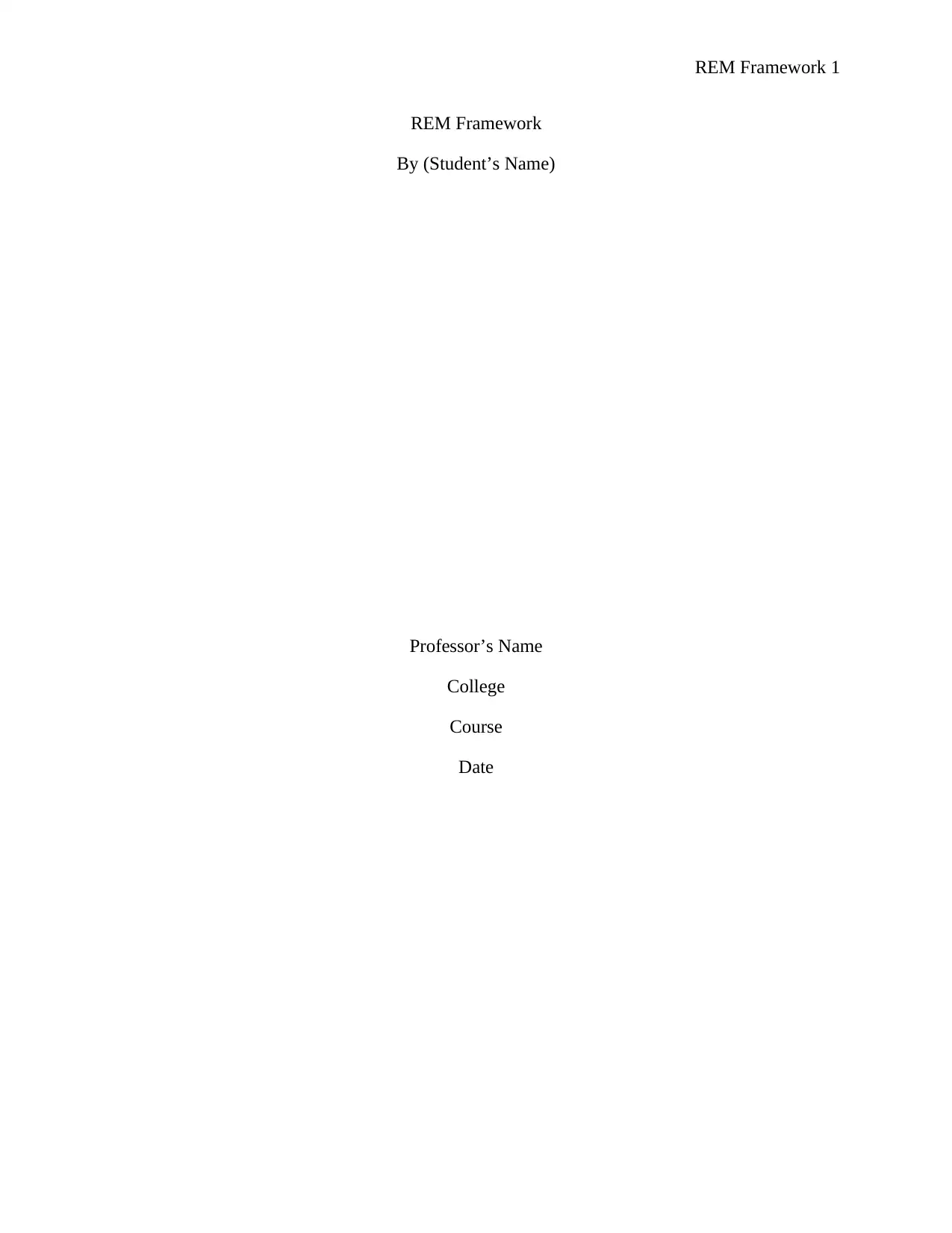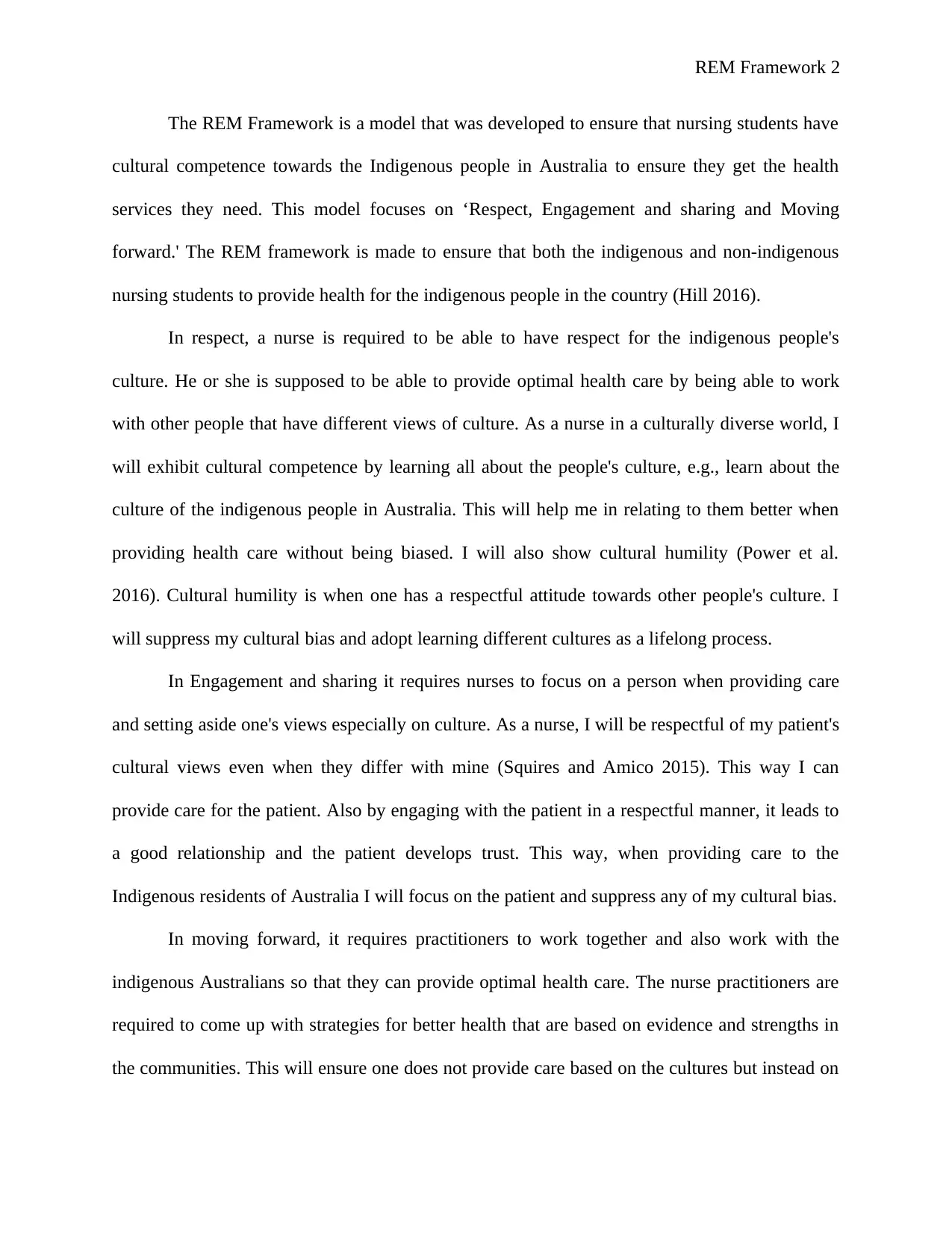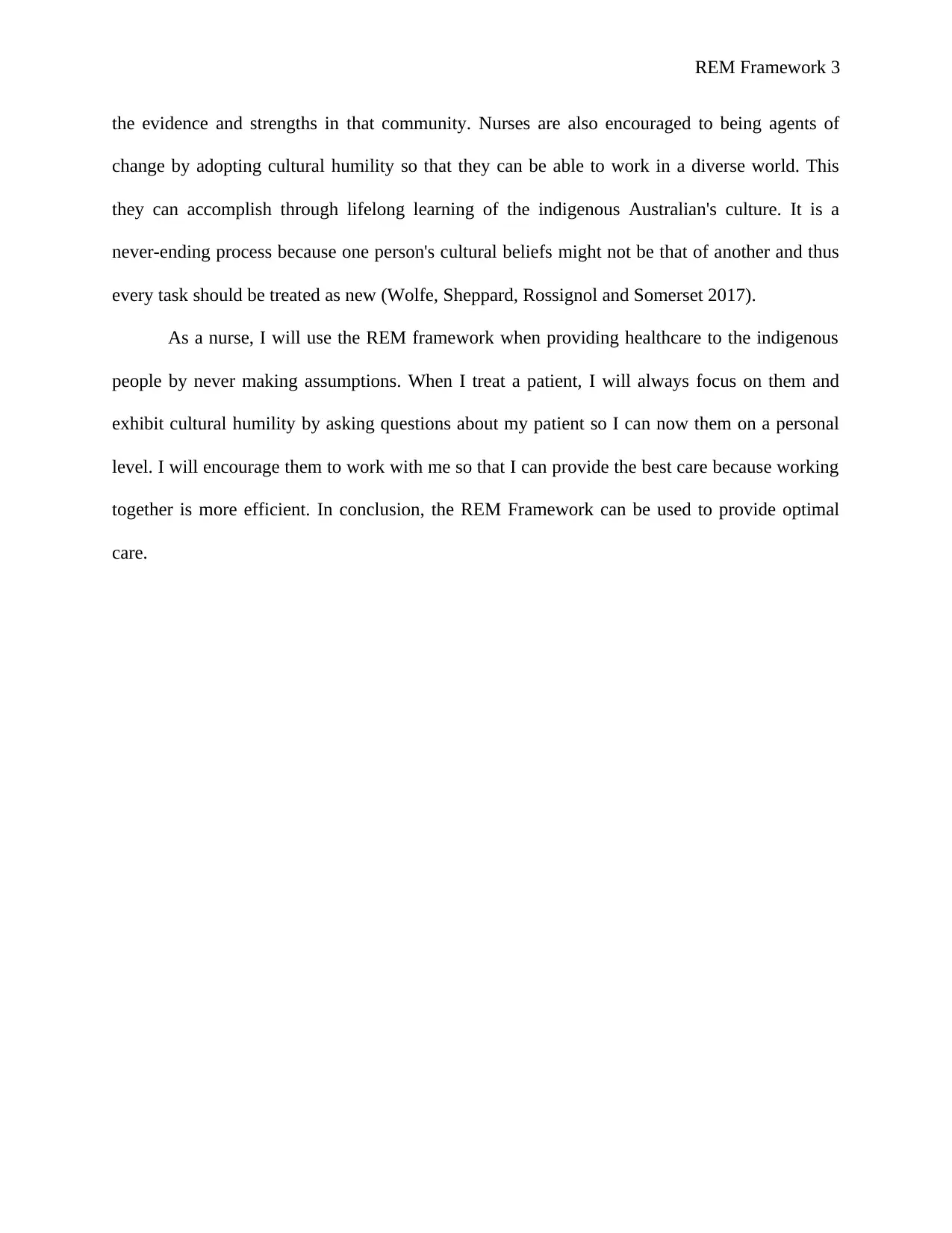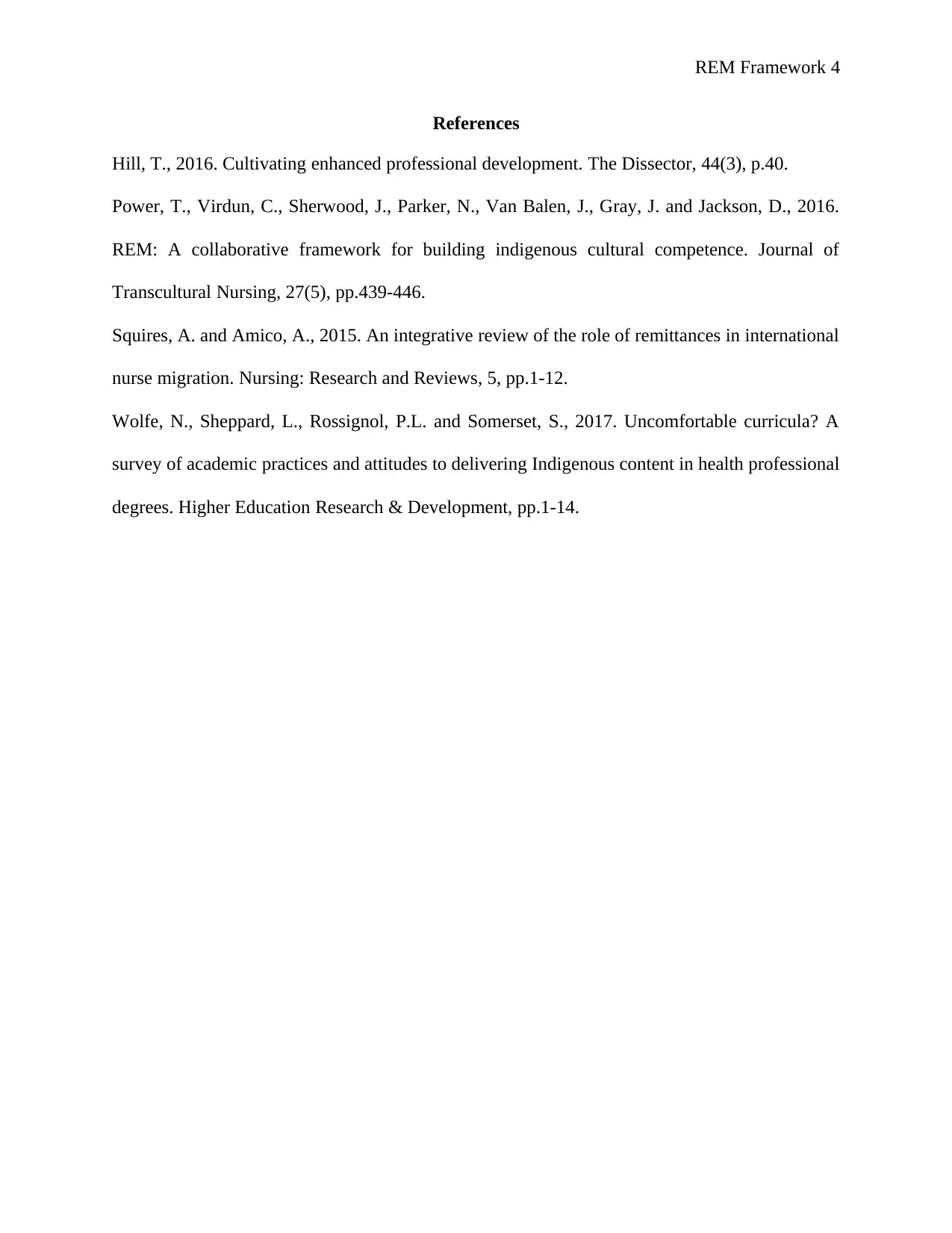REM Framework Application: Cultural Competence in Nursing Practice
VerifiedAdded on 2021/06/15
|4
|745
|38
Report
AI Summary
This report provides an overview of the REM Framework, a model designed to enhance cultural competence among nursing students when providing healthcare to Indigenous Australians. The framework, emphasizing 'Respect, Engagement, and Moving forward,' aims to ensure optimal health service delivery. The report details how nurses should demonstrate respect for Indigenous cultures, engage patients, and promote collaborative healthcare practices based on evidence and community strengths. It highlights the importance of cultural humility, lifelong learning, and avoiding assumptions in patient care. The application of the REM Framework involves focusing on the patient, encouraging collaboration, and adapting care to individual needs. The report concludes by emphasizing the framework's effectiveness in improving healthcare outcomes for Indigenous communities, as supported by the provided references.
1 out of 4










![[object Object]](/_next/static/media/star-bottom.7253800d.svg)